Improving Contact Center Efficiency with Reporting and Analytics
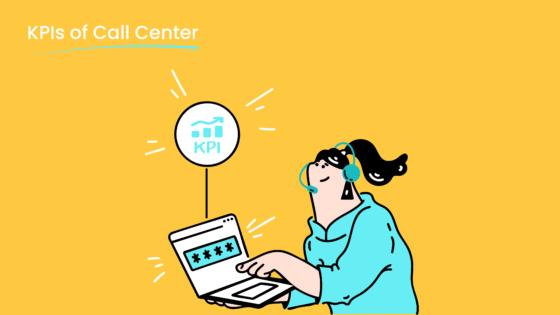
Contact centre reporting and analytics empower you to transform customer service operations. With tools that track performance metrics and customer interactions, you gain the ability to make informed decisions. Companies using data-driven insights often reduce average call handle time by 40% and optimize conversion rates by nearly 50%. High First Call Resolution (FCR) rates boost customer satisfaction while lowering costs. Despite these benefits, only 60.1% of contact centers effectively use dashboards to drive actionable results. Sobot’s solutions help eliminate inefficiencies, enabling you to enhance customer experiences and streamline operations.
Understanding Contact Center Reporting and Analytics
What Is Contact Center Reporting?
Call center reporting refers to the process of collecting, organizing, and presenting call center data to provide actionable insights into operations. It enables you to monitor key metrics such as Average Handle Time (AHT), First Call Resolution (FCR), and Customer Satisfaction (CSAT) scores. These metrics help you evaluate agent performance, identify operational gaps, and improve customer experiences.
Did you know? Companies using call center reporting tools often achieve greater visibility into their operations. This allows them to compare performance with competitors, identify gaps, and implement improvement initiatives effectively.
| Advantage | Description |
|---|---|
| Greater visibility | Provides quantitative insights into operations. |
| Comparability | Allows comparison with competitors to assess performance. |
| Performance gaps | Identifies gaps with precision for improvement. |
| Customer satisfaction | Highlights customer satisfaction as a key value driver. |
| Improvement initiatives | Helps in identifying and quantifying initiatives for enhancement. |
For example, a contact center that used real-time reporting to monitor call queues reduced abandonment rates by 25% by adjusting staffing during peak hours. This demonstrates how reporting can directly impact operational efficiency.
Defining Contact Center Analytics
Contact center analytics involves analyzing call center data to uncover patterns, trends, and actionable insights. It goes beyond reporting by interpreting the data to help you make informed decisions. Analytics can include metrics like Call Pickup Rate, Queue Abandonment Rate, and Peak Hour Analysis. These metrics allow you to optimize staffing, improve resource allocation, and enhance customer satisfaction.
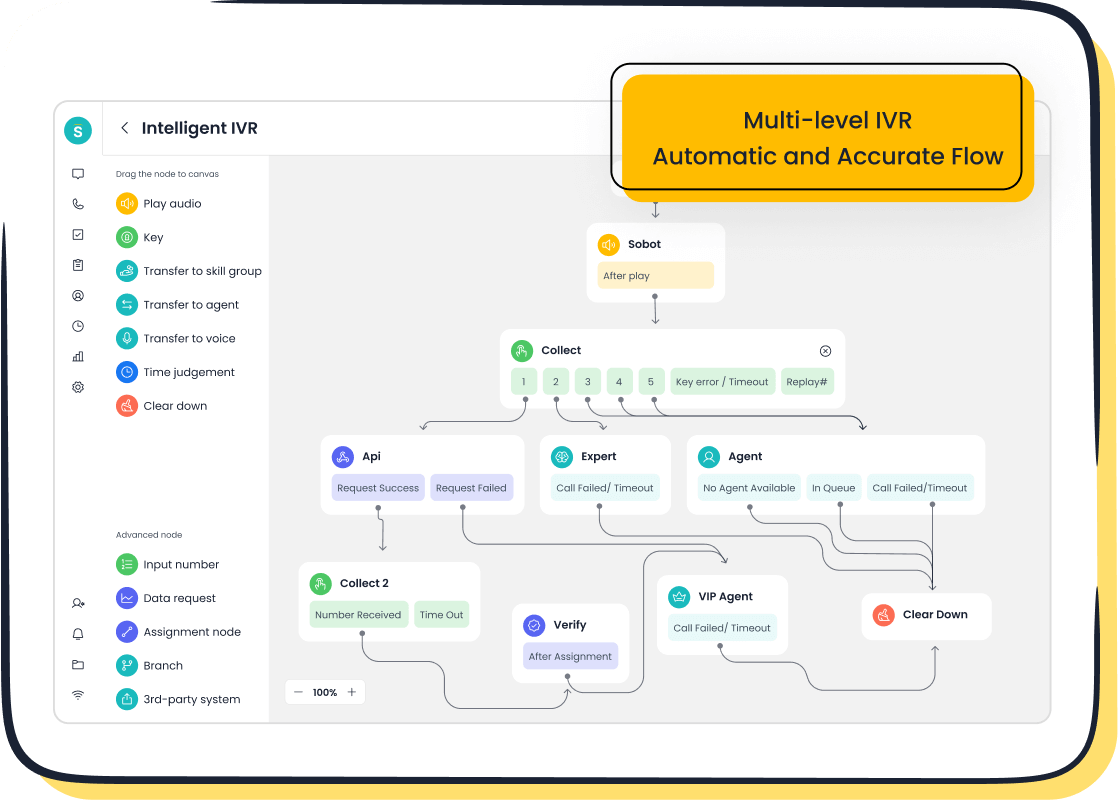
For instance, analytics can reveal that most customer inquiries occur during specific hours. With this insight, you can schedule agents more effectively, ensuring better service levels. Additionally, analytics tools like Sobot’s Voice/Call Center provide real-time monitoring and analysis, enabling you to adapt quickly to changing customer needs.
The Intersection of Reporting and Analytics for Performance Optimization
When you combine call center reporting with analytics, you unlock the full potential of your contact center performance. Reporting provides the raw data, while analytics interprets it to deliver actionable insights. This integration allows you to track specific performance metrics, identify improvement areas, and implement targeted strategies.
For example, customizable analytics can help you monitor agent performance and identify areas for improvement. Data-driven insights empower agents to enhance their efficiency, leading to higher customer satisfaction. Sobot’s Voice/Call Center excels in this area by offering features like intelligent IVR, real-time data analysis, and AI-powered voicebots. These tools streamline operations and improve both agent productivity and customer experiences.
Pro Tip: Use integrated solutions like Sobot’s Voice/Call Center to automate data capture and reduce manual errors. This not only saves time but also ensures data accuracy, which is crucial for effective decision-making.
By leveraging the intersection of reporting and analytics, you can achieve a 30% improvement in first call resolution rates, as demonstrated by a contact center that utilized real-time data access. This approach ensures your contact center remains efficient, customer-focused, and competitive.
The Key Benefits of Reporting and Analytics in Contact Centers
Enhancing Agent Productivity and Performance
Analytics plays a pivotal role in improving agent performance by providing actionable insights into their daily activities. By analyzing metrics such as Average Handle Time (AHT) and First Call Resolution (FCR), you can identify areas where agents excel and where they need support. This enables targeted coaching and training, fostering continuous improvement.
For example, companies like Wayfair reported a 20% increase in agent productivity after integrating advanced analytics tools. These tools allowed agents to access real-time customer data, streamlining workflows and enabling more effective interactions. Similarly, LiveVox enhanced its platform with comprehensive analytics, helping contact centers optimize decision-making and improve efficiency.

Pro Tip: Use tools like Sobot’s Voice/Call Center to monitor agent performance in real time. Features such as intelligent IVR and unified workspaces empower agents to handle calls more efficiently, boosting overall productivity.
| Benefit | Description |
|---|---|
| Improved supervision and performance | Allows monitoring of agents to enhance call quality and recognize high performers. |
| Optimized internal resources | Balances call volume with workforce availability, improving scheduling and call routing strategies. |
By leveraging analytics, you can achieve a significant boost in agent efficiency, ensuring better customer experiences and higher satisfaction rates.
Improving Customer Satisfaction Through Data Insights
Customer satisfaction is the cornerstone of any successful contact center. Analytics provides the insights needed to understand customer behavior, preferences, and pain points. This enables you to tailor your services to meet their expectations, creating a more personalized customer experience.
A case study on a bank's call center revealed that implementing data-driven strategies led to a 60% increase in efficiency and a 50% reduction in cost per conversion. Additionally, 65% of customers now expect instant responses, while 70% demand full context during interactions. Advanced analytics helps you meet these expectations by providing a comprehensive view of customer history and preferences.
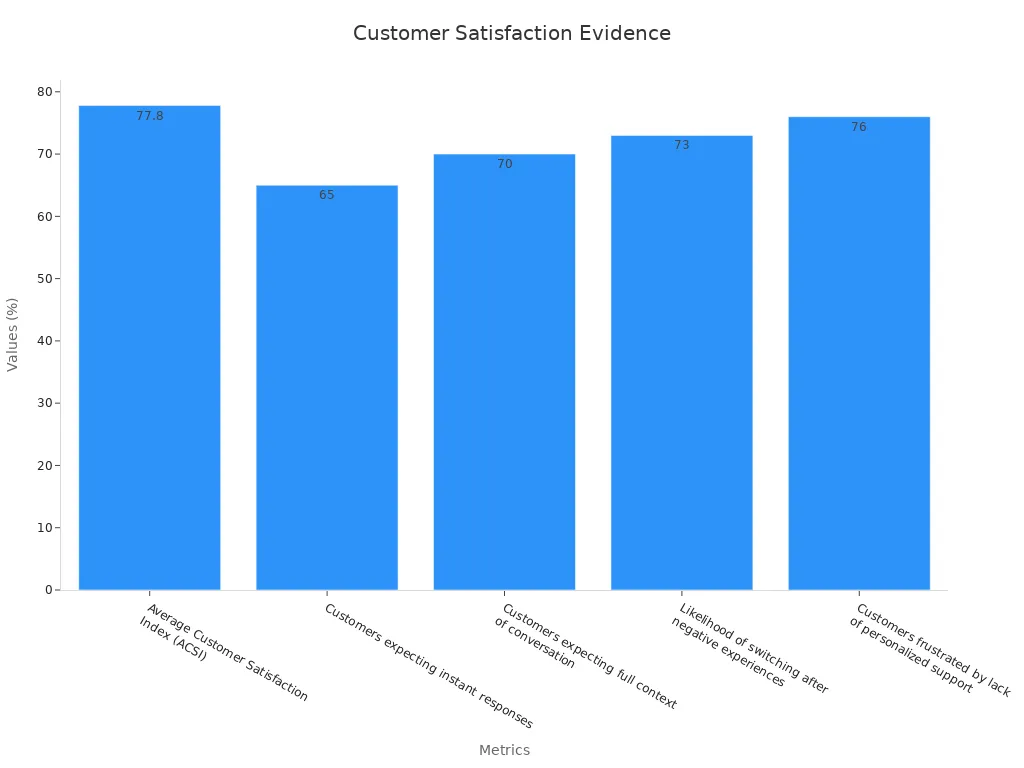

Sobot’s Voice/Call Center excels in this area by offering features like AI-powered voicebots and real-time data analysis. These tools enable you to deliver faster resolutions and more personalized support, enhancing the overall customer experience.
Did you know? 76% of customers feel frustrated by a lack of personalized support. Analytics helps you address this issue by providing the data needed to create tailored solutions.
Reducing Costs and Optimizing Resource Utilization
Analytics not only improves performance but also helps you optimize resources and reduce operational costs. By analyzing call volume patterns and peak hours, you can allocate your workforce more effectively, ensuring that agents are available when needed most.
For instance, a contact center that used analytics to monitor call queues reduced abandonment rates by 25% by adjusting staffing during peak hours. This approach minimizes wasted resources and ensures that customers receive timely assistance. Additionally, advanced analytics solutions can identify repetitive tasks that can be automated, further reducing costs.
Sobot’s Voice/Call Center offers features like bulk outbound tasks and smart call routing, which streamline operations and improve efficiency. These tools allow you to handle higher call volumes without increasing costs, making your contact center more sustainable and scalable.
| Benefit | Description |
|---|---|
| Data-driven decisions | Enables recognition of trends and changes over time, aiding in forecasting and necessary adjustments. |
| Customer-centered approach | Collects data to identify areas for improvement, ensuring services meet customer needs. |
By leveraging analytics, you can achieve a balance between cost efficiency and exceptional customer service, ensuring long-term success for your contact center.
Identifying Trends for Proactive Decision-Making
Analytics enables you to uncover trends that drive proactive decision-making in your contact center. By analyzing historical data and real-time metrics, you can identify patterns that reveal customer behavior, agent performance, and operational bottlenecks. These insights allow you to anticipate challenges and implement strategies before issues arise.
For example, analytics can show that call volumes spike during specific times of the year, such as holiday seasons. With this information, you can adjust staffing levels to handle the increased demand, ensuring customers receive timely assistance. Similarly, trend analysis might reveal recurring issues in customer inquiries. Addressing these proactively, such as by updating FAQs or training agents, can significantly improve customer satisfaction.
Pro Tip: Use tools like Sobot’s Voice/Call Center to monitor trends in real time. Features like smart call routing and AI-powered voicebots help you adapt quickly to changing customer needs.
Reports That Highlight Trend Identification
Certain reports provide valuable insights into trends that support proactive decision-making. These reports help you understand how operational data and analytics can enhance your contact center's efficiency:
| Report Title | Summary |
|---|---|
| How to Evaluate Contact Center Trends Through Operational Data | This report discusses the significance of operational data in enhancing customer interactions and improving efficiencies in contact centers. |
| Contact Center Analytics: What to Measure and How | This report highlights the importance of analytics reports in informing call center strategies aimed at improving customer experience and resource utilization. |
By leveraging these reports, you can gain a deeper understanding of how to use analytics for trend identification and operational improvement.
Real-World Example: Sobot in Action
Sobot’s Voice/Call Center provides advanced analytics tools that help you identify trends effortlessly. For instance, its real-time monitoring feature allows you to track call abandonment rates and adjust workflows immediately. A customer like Weee! used Sobot’s flexible IVR system to address language barriers and time zone differences, resulting in a 20% increase in agent efficiency and a 50% reduction in resolution time. These results demonstrate how trend analysis can lead to measurable improvements in performance.
Did you know? Businesses that use analytics to identify trends often see a 30% improvement in first call resolution rates. This directly impacts customer satisfaction and operational efficiency.
By identifying trends, you can stay ahead of potential challenges and create a more efficient, customer-focused contact center. Analytics empowers you to make informed decisions, ensuring your operations remain agile and competitive.
Essential Metrics and KPIs to Track for Better Performance

Average Handle Time (AHT)
Average Handle Time (AHT) measures the total time agents spend handling a customer interaction, including talk time, hold time, and after-call work. It is a critical performance metric for evaluating efficiency in your contact center. Lower AHT often indicates streamlined processes, but it’s essential to balance speed with quality to ensure customer satisfaction.
AHT benchmarks vary by industry. For example:
- Telecom providers aim for an AHT of just over 8.5 minutes.
- Banks and IT services target approximately 4.75 minutes.
- eCommerce businesses typically strive for 5-7 minutes.
Pro Tip: Focus on resolving issues effectively, even if it takes slightly longer. This approach enhances customer satisfaction and builds loyalty.
| Industry | AHT Benchmark |
|---|---|
| Telecom | 8.5 minutes |
| Banking & IT | 4.75 minutes |
| eCommerce | 5-7 minutes |
Using analytics tools like Sobot’s Voice/Call Center, you can monitor AHT in real time. Features like smart call routing and unified workspaces help agents handle calls efficiently, reducing unnecessary delays.
First Call Resolution (FCR)
First Call Resolution (FCR) tracks the percentage of customer issues resolved during the first interaction without requiring follow-ups. It is one of the most impactful customer experience metrics, directly influencing customer satisfaction and operational costs.
Studies show that FCR has the highest correlation to customer satisfaction scores. A 1% improvement in FCR can reduce operating costs by 1% and increase customer retention by 95%. Additionally, customers needing three contacts to resolve an issue report 30% lower satisfaction levels.
| Metric | Impact of 1% Improvement in FCR |
|---|---|
| Operating Costs | Reduce by 1% |
| Customer Retention | 95% will continue to do business |
| Customer Satisfaction | Improve by 1% |
| Employee Satisfaction | Improve by 2.5% |

Sobot’s intelligent IVR and AI-powered voicebots enhance FCR by routing calls to the right agents and providing instant solutions. These tools ensure customers receive accurate assistance on their first attempt.
Customer Satisfaction Score (CSAT)
Customer Satisfaction Score (CSAT) measures how satisfied customers are with your service. It is a vital performance management tool that highlights areas needing improvement and validates the success of implemented changes.
Higher CSAT scores predict increased customer retention and revenue growth. For example, industries like healthcare aim for CSAT scores between 85-95%, while eCommerce businesses target 80-90%. Analytics tools help you identify pain points and tailor solutions to meet customer expectations.
| Industry | CSAT Benchmark |
|---|---|
| Healthcare | 85-95% |
| eCommerce | 80-90% |
Sobot’s Voice/Call Center provides insights into customer interactions, enabling you to address concerns proactively. By leveraging analytics, you can improve CSAT and foster long-term customer loyalty.
Call Abandonment Rate and How Sobot’s Voice/Call Center Can Help
Call abandonment rate measures the percentage of calls disconnected by customers before speaking to an agent. It reflects operational efficiency and directly impacts customer satisfaction. You can calculate it using this formula:
Call Abandonment Rate = (Abandoned Calls ÷ Total Incoming Calls) × 100.
For instance, if your contact center receives 5,000 calls weekly and 300 are abandoned, the abandonment rate would be 6%.
High abandonment rates often indicate dissatisfaction. Customers may hang up due to long wait times or poor call routing. Monitoring this metric helps you identify bottlenecks like insufficient staffing or ineffective workflows. Industries such as healthcare and government aim for abandonment rates below 7.5%, while the average target for inbound call centers is 5% or less.
| Industry | Call Abandonment Rate (%) |
|---|---|
| Government/Public Sector | 7.44 |
| Healthcare | 7.4 |
| Transportation/Logistics | 6.91 |
Sobot’s Voice/Call Center offers tools to reduce abandonment rates effectively. Features like intelligent IVR and smart call routing ensure customers connect with the right agents quickly. Real-time monitoring allows you to adjust staffing during peak hours, minimizing wait times. Additionally, the platform’s AI-powered voicebots handle repetitive queries, freeing agents to focus on complex issues. These capabilities improve operational efficiency and enhance customer satisfaction.
Tip: Regularly review call abandonment trends using analytics tools. This helps you identify patterns and implement timely improvements to keep rates low.
Using Net Promoter Score (NPS) for Customer Loyalty Insights
Net Promoter Score (NPS) measures customer loyalty by asking one simple question: “How likely are you to recommend our service to others?” Responses range from 0 (not likely) to 10 (extremely likely). NPS provides valuable insights into customer behavior and long-term loyalty.
Studies reveal strong correlations between NPS improvements and business growth. For example:
- A 7% increase in NPS correlates with a 1% revenue boost (London School of Economics).
- Companies with higher NPS scores see up to 70% revenue growth, while those with declining scores experience a 24% drop (Philips Lighting Group).
| Study/Source | Findings |
|---|---|
| Satmetrix & Fred Reichheld | NPS correlates with customer behavior and lifetime value (4,000 surveys). |
| CustomerGauge | A tenfold NPS increase leads to a 3.2% upsell revenue rise. |
| London School of Economics | A 7% NPS increase results in a 1% revenue increase. |
| Philips Lighting Group | Higher NPS accounts saw 70% revenue growth; declining NPS accounts lost 24%. |
Sobot’s Voice/Call Center helps you track and improve NPS by providing analytics tools that monitor customer interactions. Features like unified workspaces and AI-driven insights enable agents to deliver personalized experiences. By addressing customer concerns proactively, you can boost loyalty and foster long-term relationships.
Did you know? Businesses that prioritize NPS improvements often achieve higher customer retention and revenue growth. Use analytics to identify areas for enhancement and act on customer feedback.
How to Leverage Contact Center Reporting Tools Effectively
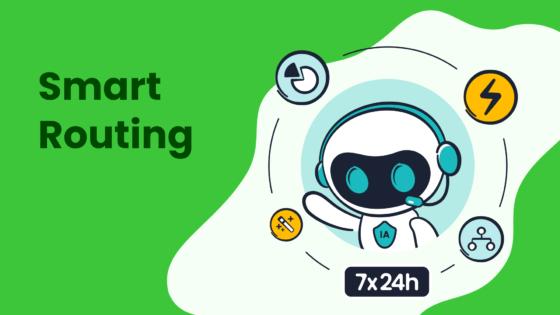
Using Real-Time Reporting to Adapt Quickly
Real-time reporting empowers you to make immediate decisions based on live data. It enhances operational agility by providing timely insights into performance metrics. For example, you can identify service bottlenecks and rectify them quickly, ensuring better responsiveness. Real-time reporting also aligns operations with strategic objectives, helping you implement relevant improvements.
Tip: Use tools like Sobot’s Voice/Call Center to monitor real-time metrics. Features such as call tracking and smart routing allow you to adapt workflows instantly, improving customer satisfaction.
| Metric | Impact on Operational Agility |
|---|---|
| Service Bottlenecks Identified | Quick rectification leads to enhanced responsiveness. |
| Alignment with Strategic Objectives | Ensures operational improvements are relevant and timely. |
| Continuous Improvement Culture | Data empowers teams to adapt and innovate rapidly. |
By leveraging real-time reporting, you foster a culture of continuous improvement. This ensures your contact center remains agile and competitive in a dynamic market.
Data Visualization for Understanding Trends and Performance
Data visualization transforms complex datasets into clear visuals, making it easier to interpret trends and performance metrics. Charts, graphs, and dashboards simplify relationships within data, enabling you to detect patterns quickly. This approach is especially useful for non-technical audiences, as it makes insights accessible and actionable.
For example, visualizing call abandonment rates over time can reveal peak hours when customers disconnect most frequently. You can then adjust staffing levels to address this issue. Data visualization also aids in explaining findings concisely, ensuring better-informed decisions.
- Data visualization helps detect relationships and patterns within datasets more efficiently than traditional spreadsheets.
- It simplifies complex data, making it accessible to non-technical audiences.
- By presenting data visually, it aids in better-informed, data-driven decisions.
Pro Tip: Use Sobot’s Voice/Call Center to create customizable dashboards. These dashboards provide a visual representation of key metrics, helping you monitor trends and optimize performance.
Utilizing Predictive Analytics to Forecast Needs
Predictive analytics enables you to anticipate future demands by analyzing historical data and real-time inputs. Models like machine learning improve predictions over time, while forecast models estimate numeric values for new data. For instance, predictive analytics can help you forecast call volumes during holiday seasons, ensuring adequate staffing.
| Predictive Analytics Model | Description |
|---|---|
| Forecast Model | Estimates numeric values for new data based on historical data learnings. Useful for predicting call volumes in contact centers. |
| Machine Learning | AI models that improve predictions over time by learning from new data. |
| Real-Time Inputs | Incorporates current factors like social media activity to influence predictions. |
Sobot’s Voice/Call Center integrates predictive analytics tools to help you plan proactively. Features like AI-powered voicebots and real-time monitoring allow you to adapt to changing customer needs. By forecasting accurately, you can reduce wait times and improve customer satisfaction.
Did you know? Contact centers using predictive analytics often achieve higher efficiency and customer satisfaction by anticipating challenges before they arise.
Integrating Sobot’s All-in-One Voice/Call Center for Superior Efficiency
Sobot’s All-in-One Voice/Call Center transforms your contact center by combining advanced analytics with intelligent tools. This integration empowers you to streamline operations, enhance customer satisfaction, and achieve measurable improvements in performance.

One of the key advantages of Sobot’s solution is its ability to provide actionable insights through real-time analytics. For example, the platform’s intelligent IVR and AI-powered voicebots analyze customer interactions to identify patterns and trends. These insights allow you to optimize workflows, reduce call handling times, and improve first-call resolution rates. By leveraging these tools, you can create a more efficient and customer-focused contact center.
The success metrics of Sobot’s Voice/Call Center speak for themselves:
| Metric | Value |
|---|---|
| Reduction in inbound discussion volume | 20% |
| Increase in positive feedback | 96%+ |
| Correct answers provided by AI platform | 80% |
| Customer satisfaction rate | 95% |
| Self-service question resolution | 22.2% |
| CSAT score | 97% |
| Problem resolution rate | 85% |
| Customer happiness rate | 99% |
| Sign-off rate increase | 35% |
| COD collection rate increase | 40% |
These metrics highlight how Sobot’s analytics-driven approach delivers tangible results. For instance, the platform’s ability to resolve 22.2% of questions through self-service reduces the workload on agents, allowing them to focus on complex issues. This not only improves efficiency but also enhances customer satisfaction.
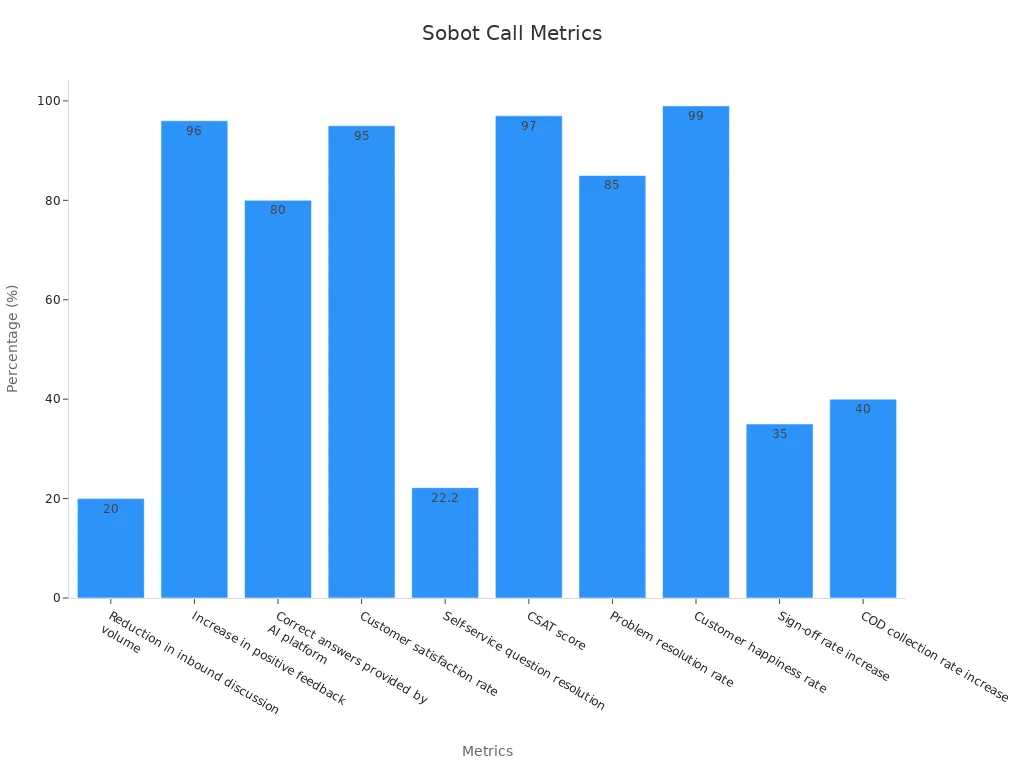
Sobot’s unified workspace further simplifies agent tasks by consolidating customer data and communication channels into one platform. This ensures agents have all the information they need to provide personalized support. Additionally, features like smart call routing and bulk outbound tasks optimize resource allocation, ensuring your team operates at peak efficiency.
By integrating Sobot’s Voice/Call Center, you gain access to a powerful analytics platform that drives continuous improvement. The result is a contact center that not only meets but exceeds customer expectations.
Tackling Common Challenges in Contact Center Analytics
Overcoming Data Silos with Unified Solutions Like Sobot
Data silos create significant obstacles in contact center analytics. They prevent seamless information sharing, leading to inefficiencies and customer dissatisfaction. Unified solutions like Sobot’s Voice/Call Center eliminate these silos by integrating data across channels into a single platform. This ensures agents have access to complete customer insights, enabling faster resolutions and better service quality.
- Wasted Time: Agents spend excessive time searching for information, delaying resolution.
- Blind Spots: Managers lack a comprehensive view, hindering trend identification and operational efficiency.
- Frustrated Customers: 60% of customers report frustration due to having to repeat information.
- Costly Impact: 80% of businesses see data silos as obstacles to providing seamless experiences.
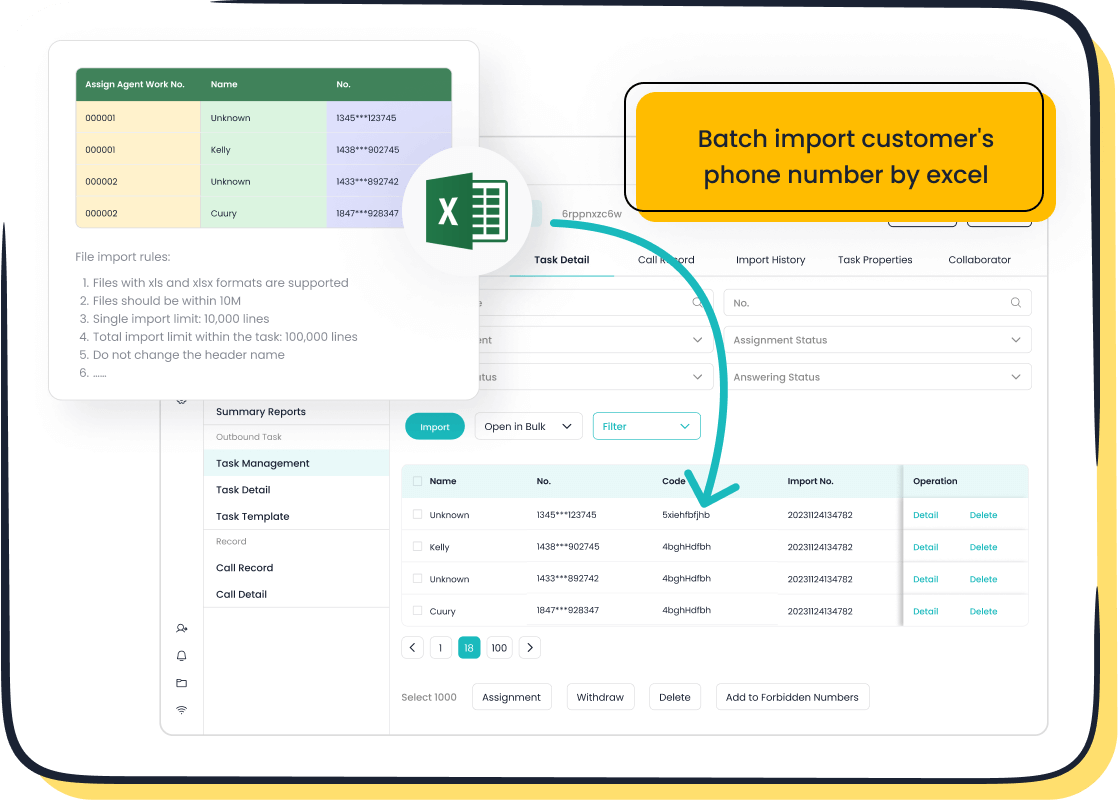
Sobot’s unified workspace consolidates customer data, empowering agents to deliver personalized support. Features like intelligent IVR and real-time analytics ensure your contact center operates efficiently while enhancing customer satisfaction.
Ensuring Data Integrity and Accuracy
Accurate data forms the backbone of effective analytics. It drives informed decision-making, improves efficiency, and fosters customer satisfaction. Flawed data, however, can lead to costly mistakes and damage brand credibility. Maintaining data integrity ensures your contact center delivers reliable insights for continuous improvement.
Achieving and maintaining data integrity can save your organization the time, effort, and money it would cost to make a big decision based on incorrect or incomplete data.
Sobot’s Voice/Call Center prioritizes data accuracy through features like real-time monitoring and encrypted data transfer. These tools ensure your analytics remain trustworthy, enabling you to optimize performance and enhance customer satisfaction.
Preparing Teams for Data-Driven Decision-Making
Analytics tools are only as effective as the teams using them. Preparing your agents and managers for data-driven decision-making ensures they can leverage insights effectively. Training programs should focus on interpreting analytics reports, identifying trends, and implementing strategies for improvement.
Over-automation risks customer satisfaction. Success depends on finding the right mix between automated and human support. The solution lies in strategic process mapping that identifies appropriate automation points while reserving human agents for complex, high-value interactions. Organizations must maintain clear escalation paths from automated to human support to protect service quality.
Sobot’s Voice/Call Center supports this balance by combining AI-powered voicebots with human agents. This approach ensures automation handles repetitive tasks while reserving agents for complex issues. By equipping your team with the right tools and training, you can maximize the impact of analytics on your contact center’s performance.
Balancing Between Automation and Personal Interaction
Automation has revolutionized contact centers, offering faster responses and streamlined workflows. However, relying solely on automation can lead to impersonal experiences. Striking the right balance between automation and personal interaction ensures your contact center delivers both efficiency and meaningful connections.
Automation excels at handling repetitive tasks. Features like AI-powered voicebots and intelligent IVR systems can answer common questions, route calls, and collect data. These tools save time and allow agents to focus on complex issues. For example, analytics can identify frequently asked questions, enabling you to automate responses while maintaining accuracy.
Despite its advantages, automation cannot replace human empathy. Customers often prefer speaking to a person when dealing with sensitive or complicated matters. Personal interaction builds trust and strengthens relationships. By analyzing customer insights, you can determine when to escalate interactions from automated systems to live agents. This approach ensures customers feel valued and understood.
To achieve this balance, use analytics to monitor customer behavior and preferences. For instance, real-time insights can reveal when customers abandon automated systems out of frustration. You can then adjust workflows to provide human support at critical moments. This strategy not only improves customer satisfaction but also enhances overall performance.
Sobot’s Voice/Call Center offers tools to help you find this balance. Its AI-powered voicebots handle routine inquiries, while smart call routing ensures customers connect with the right agents when needed. By combining automation with personal interaction, you create a contact center that is both efficient and customer-focused.
Tip: Regularly review analytics to identify areas where automation can improve efficiency without compromising the human touch.
Adopting contact center reporting and analytics transforms your operations by providing actionable insights that drive efficiency and customer satisfaction. Metrics like Customer Satisfaction Score (CSAT), Net Promoter Score (NPS), and First Contact Resolution (FCR) highlight how data-driven strategies improve performance.
| Metric | Description |
|---|---|
| Customer Satisfaction Score (CSAT) | Measures customer satisfaction with a specific interaction on a scale of 1 to 5. |
| Net Promoter Score (NPS) | Assesses customer loyalty by asking how likely customers are to recommend the service on a scale of 0 to 10. |
| First Contact Resolution (FCR) | Evaluates the ability to resolve customer issues in the first interaction without follow-ups. |
| Customer Effort Score (CES) | Measures how easy it is for customers to interact with the contact center. |
| Quality Assurance (QA) scores | Evaluates agent adherence to service standards and protocols during customer interactions. |
Tools like Sobot’s Voice/Call Center empower you to leverage analytics effectively. Features such as predictive analytics, speech and text analysis, and real-time agent support enable quicker resolutions and proactive improvement. By embracing these insights, you can optimize workflows, reduce costs, and enhance customer satisfaction.
Tip: Start using analytics today to uncover trends, anticipate challenges, and create a contact center that exceeds expectations.
FAQ
What is the difference between reporting and analytics in a contact center?
Reporting focuses on collecting and presenting data, such as call volumes or agent performance. Analytics interprets this data to uncover patterns and trends. Together, they help you make informed decisions to improve efficiency and customer satisfaction.
How can analytics improve customer satisfaction in a contact center?
Analytics helps you understand customer behavior and preferences. It identifies pain points and allows you to tailor services. By using insights from analytics, you can resolve issues faster and provide a more personalized experience, leading to higher satisfaction.
What are the most important metrics to track in a contact center?
Key metrics include Average Handle Time (AHT), First Call Resolution (FCR), Customer Satisfaction Score (CSAT), and Net Promoter Score (NPS). These metrics measure efficiency, resolution rates, and customer loyalty, helping you evaluate and improve performance.
How does Sobot’s Voice/Call Center enhance contact center efficiency?
Sobot’s Voice/Call Center offers tools like intelligent IVR, real-time analytics, and AI-powered voicebots. These features streamline workflows, reduce call handling times, and improve first-call resolution rates. The platform also provides a unified workspace for agents, ensuring seamless operations.
Why is real-time reporting important for a contact center?
Real-time reporting allows you to monitor performance as it happens. It helps you identify and address issues immediately, such as long wait times or high call volumes. This ensures better responsiveness and improves overall customer experience.
See Also
Enhancing Call Center Efficiency Through Effective Monitoring Strategies
Best Call Center Analytics Tools to Use in 2024
Essential Practices for Effective Call Center Quality Management
